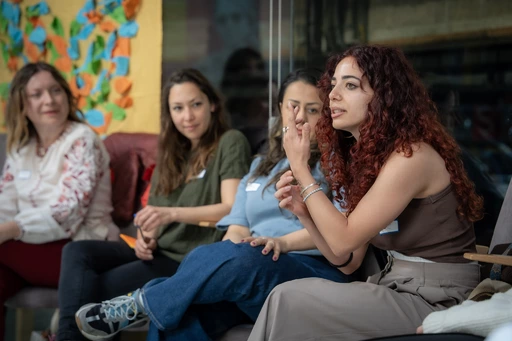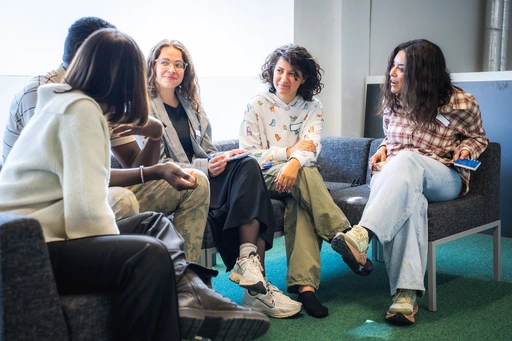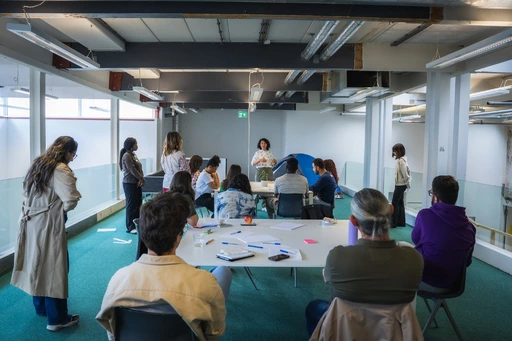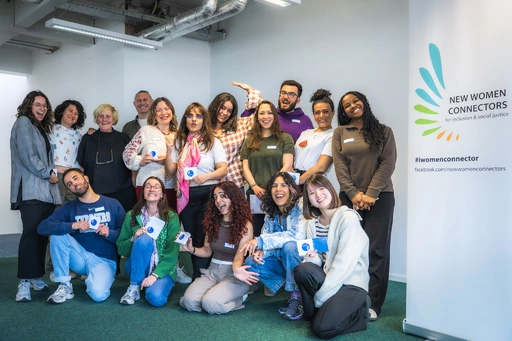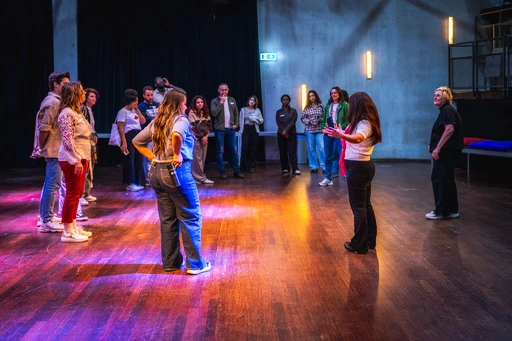
Your story is important and can be heard!
Storytelling is a tool of advocacy. By telling your story in your own words you make people aware of your journey and history.
Welcome back, in this blog I will take you through the second half of the Storytelling Basecamp afternoon session. Art of Storytelling as Advocacy: a human rights approach was what we began to unpack together, and we started with reflecting on stereotypes by sharing experiences based on assumptions made about us based on where we are from, how we look or the religion we practice. Both in the countries of our origin and in the country where we live now.
Our international group consisted of Turkish, Syrian, Egyptian, Ukrainian, Pakistani, Indian, Colombian, Japanese, Yemenis, Surinamese, and Ghanaian.
I have to say that even though we are in 2025 some of the examples that came up are surprisingly still happening.
“People tend to put you in a box or want to put you in a box when you introduce yourself.” Shared one of the participants.
“If you have dark skin and you’re in the Netherlands people automatically assume you are either from Surinam or Nigeria, and if you are living in an African country and you are mixed race you could be considered too light skinned and can suffer from racism in this way too.”
“If you are a queer person from Latin America, you might be seen as too feminine in your country but in the Netherlands, you are too masculine. Also, if you’re from Colombia people will ask you if you can provide them with Cocaine.”
“As a mother from an Asian culture, it’s assumed in both the Global North and the Global South that you would be a stay-at-home mother, cooking, cleaning, and taking care of the family. It’s a surprise to most if you have ambitions and work on your own passions and career, especially if you are Muslim. There is always an immediate assumption about who can do what kind of work or labour.”
“People look at your hair, tattoos, clothes, skin, and eye colour and say, you can’t be from that country? Even people from your own country say this to you.”
“Lighter shaded people, no matter where you are in the world, are assumed to be superior, have more respect, privilege, seen as more beautiful, of a higher class or level of wealth.”
Now this causes a counter issue because when this assumption is made, it undercuts a person’s experience which limits us getting to know a person’s true story. In some countries, violence is put upon individuals who don’t fit into the “typical stereo type” because of the painful history of colonialism, and these assumptions continue to draw lines between people and re-enforcing misfits. This can also cause people to become asylum seekers, who because of their “controversial” ways of being can no longer live in their home countries. But when they arrive in a place of asylum they are faced with another form of racism and “it feels like micro aggression,” as one of the participants put it. Because no “white person” has all these types of questions posed upon them.
We briefly discuss how these questions and assumptions come across as rude or ignorant at times. Also, what could be the possible intentions behind the kind of questions and assumptions made? Is it because people want to try to relate to you? Is it because they want to truly understand who you are and where you’re coming from? One thing I have noticed is that someone who has immigrated to a new place or who has mixed genes isn’t generally quick to make assumptions about another person’s background. Rather they ask questions that are generally open with a curiosity to know more about a new person’s story and journey.
A lot of times immigrants and refugees are too exhausted to have to explain their story to others yet again and so they settle for the assumptions people make about them. This is perhaps because they feel like their story is too small or not important compared to others. Or that their story doesn’t matter that much. As was the case with a few of the participants in our group today. Also, some people’s stories are both beautiful, heartfelt and at the same time heart breaking, painful and difficult ones to tell. In a world where we are encouraged to smile and pretend that everything is ok all the time, people are unsure how to tell their story or even if there is even a place for their story to be heard. Therefore, this Storytelling workshop is very relevant and valuable to the participants. Reminding us that every story big or small will draw us closer together and create better understanding between those who share them and those who are actively listening.
What question bothers you? What do you want to change? What is your fire and where is it in your body? What is your joy and pain? How does your narrative share the personal and political entanglement that it entails?
Who is your audience? How can I position myself so that I can feel empowered and can empower others whose stories and experiences need to be heard? What are my resources? What is my body language and how do I use it? How are these stories being used? What is the propose behind telling the story? How to consider if the audience is a safe or right one to share the story with. Where some of the questions we touched upon and that were going to be explored in further workshops.
“Being authentic is when you are from and have lived in that country, then it is your right to tell that story. This is your power.” said Anila Noor.
It’s these kinds of stories that make people into humans not labels. These stories create a deeper understanding of who we are, that we are not just an immigrant or refugee. These stories create connection, care, build trust and knowledge amongst each other. To be honest this vulnerable but empowering experience gave me hope and a desire to hear the stories that each person in the group will eventually share on stage at the final event later this year.
To end this blog, here is a short story, I concocted during a 3 min exercise we did together.
Once upon a time a unicorn was born. It wasn’t the only one of its breed within the land of India, but it was a rare sighting indeed. As this unicorn grew up it heard of and met other unicorns from other lands. Their phanomon too was a result of the mixing of races and migration. These unicorns also stood out often and the unicorn felt the comfort of knowing it wasn’t alone in this world, while at the same time understanding that it was beautifully unique.

